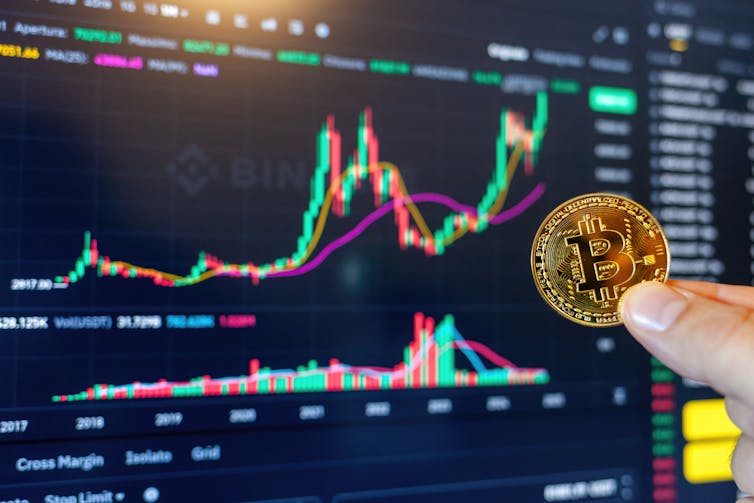Why Your Retirement Fund Might Soon Include Cryptocurrency
Pension funds are investment pools that manage people's retirement savings, aiming to encourage long-term saving and provide financial security to retirees. Recently, some pension funds in the US, UK, and elsewhere have begun investing in cryptocurrencies, an asset class renowned for its volatility.
Cryptocurrency in Pension Funds
In the US, bitcoin derivatives such as exchange-traded funds (ETFs) are becoming a popular choice for pension schemes in states like Wisconsin and Michigan. ETFs are baskets of investments that can be traded on a stock exchange and aim to replicate market performance. Bitcoin and ethereum ETFs track the prices of these cryptocurrencies, offering fund managers exposure without the need to directly manage digital assets.
The interest in cryptocurrencies is largely driven by their surging prices. In December 2024, following Donald Trump’s endorsement of digital assets, the price of bitcoin hit US$100,000 for the first time. It then rose to around US$110,000 on the day of Trump's inauguration. This surge presents significant short-term profit potential for investors, including pension funds.
However, pension funds operate under strict fiduciary duties, which require them to prioritize low-risk, stable investments over speculative opportunities. Concerns have been raised about whether moving into crypto could undermine the stability of people's pensions. An actuary at Wiltshire Wealth described a UK pension scheme investing 3% of its assets in bitcoin as “deeply irresponsible.” Cryptocurrencies are notorious for their volatility, risk of fraud, and susceptibility to speculative bubbles.

The value of cryptocurrencies is derived more from collective belief and perception rather than intrinsic financial fundamentals, making them vulnerable to manipulation and rapid sentiment shifts. If pension fund managers invest heavily in cryptocurrencies, a price crash could jeopardize retirees’ savings.
Historical Precedents
Such crashes have happened before. For instance, in 2022, Canada’s Ontario Teachers’ Pension Plan lost US$95 million after the FTX crypto exchange failed, leading them to avoid further crypto investments due to high uncertainty.
Despite Trump's endorsement, the current bitcoin price boom could be just another bubble. Cryptocurrencies are relatively new as an asset class, and the lack of long-term performance data complicates their suitability for pension fund portfolios. Pension funds are under increasing pressure to explore alternative investment options to enhance returns, especially as analysts predict a pension crisis in the UK within the next two decades.
The Long-Term Viability of Crypto
The core question is whether bitcoin and ethereum prices will continue to rise. Advocates argue that bitcoin’s fixed supply cap of 21 million coins suggests its value should increase over time. However, skeptics question why something without any tangible value should have a price at all.
Almost 95% of bitcoin has already been mined. As supply diminishes, mining becomes more difficult and energy-intensive, leading only the largest mining pools to profit from the current boom. The cost of mining is often cited as a justification for bitcoin's value, reflecting the resources required to produce it. However, once mining ceases, miners will rely solely on transaction fees to maintain network security, raising questions about bitcoin’s long-term value and utility as a medium of exchange.

The ease with which influential figures can disrupt the crypto market adds to the uncertainty. Trump recently launched his own cryptocurrency just before his inauguration, and the market capitalization of his coin soared to US$15.1 billion over the pre-inauguration weekend.
While some may push pension funds to explore the volatile crypto market, the risks are significant. High market volatility, regulatory uncertainty, and potential misalignment with long-term investment goals pose challenges. Pension funds must balance the demand for innovation with their responsibility to protect retirees’ savings, ensuring any crypto investments are prudent and sustainable.





Comments
Join Our Community
Sign up to share your thoughts, engage with others, and become part of our growing community.
No comments yet
Be the first to share your thoughts and start the conversation!